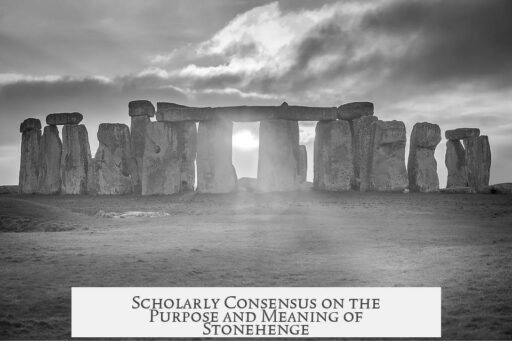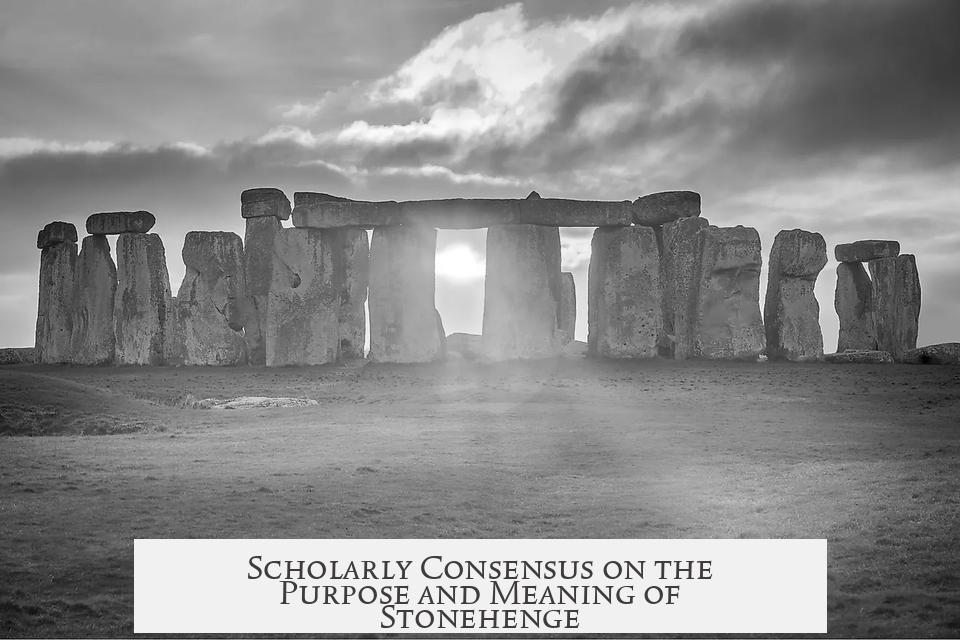The most accepted explanation for Stonehenge among scholars is that it served as part of a complementary pair of Neolithic monuments linked by symbolic meaning, ceremonial use, and astronomical alignment.
Stonehenge is thought to represent death, constructed from stone, while nearby Durrington Walls, made primarily of wood, symbolizes life. These two monuments likely functioned together, connected by the River Avon. The landscape and riverscape formed a symbolic journey or passage from life (Durrington Walls) to death (Stonehenge).
Scholars emphasize the alignment of both sites with solar events, specifically the summer and winter solstices. These alignments suggest that people gathered at these monuments during the longest and shortest days of the year. The solstice events probably marked significant ceremonial occasions related to the cyclical themes of birth and death.
Research indicates that participants traveled to these sites to perform rituals celebrating the cycles of life. The duality of wood and stone, life and death, and the solstice ceremonies underpin the theory that Stonehenge was part of a broader spiritual and cultural system rather than a standalone structure.
| Aspect | Description |
|---|---|
| Stonehenge | Constructed from stone; associated with death |
| Durrington Walls | Constructed from wood; associated with life |
| Connection | Linked by the River Avon; symbolizing passage from life to death |
| Ceremonial Role | Ritual gatherings at solstices; celebrating birth and death cycles |
This interpretation avoids simplistic explanations by recognizing the complexity of the Neolithic worldview. Stonehenge and its complementary site illustrate a deeply symbolic relationship with nature, death, and life cycles rather than functioning just as an astronomical calendar or burial site.
- Stonehenge pairs with Durrington Walls, symbolizing death and life.
- The River Avon links these sites, forming a symbolic passageway.
- Both sites align with summer and winter solstices, highlighting ceremonial use.
- People gathered to honor cyclical themes of life and death during solstice events.
What is the relationship between Stonehenge and Durrington Walls?
Stonehenge and Durrington Walls are thought to be complementary Neolithic monuments. Stonehenge, built of stone, is linked to death, while Durrington Walls, made of wood, relates to life.
How do scholars interpret the River Avon in relation to Stonehenge?
The River Avon likely connected Stonehenge and Durrington Walls. This connection suggests ceremonies symbolizing a passage from life to death.
Why are the summer and winter solstices important to Stonehenge?
The monuments align with the solstices. People probably gathered on these days to hold ceremonies marking birth and death.
What do the materials used at Stonehenge and Durrington Walls signify?
Stonehenge’s stone construction is associated with death. The wood used at Durrington Walls represents life, reinforcing their complementary roles.
Did people travel far to attend Stonehenge ceremonies?
Yes, scholars believe people came from various regions during solstices to participate in important ceremonial events at Stonehenge.




